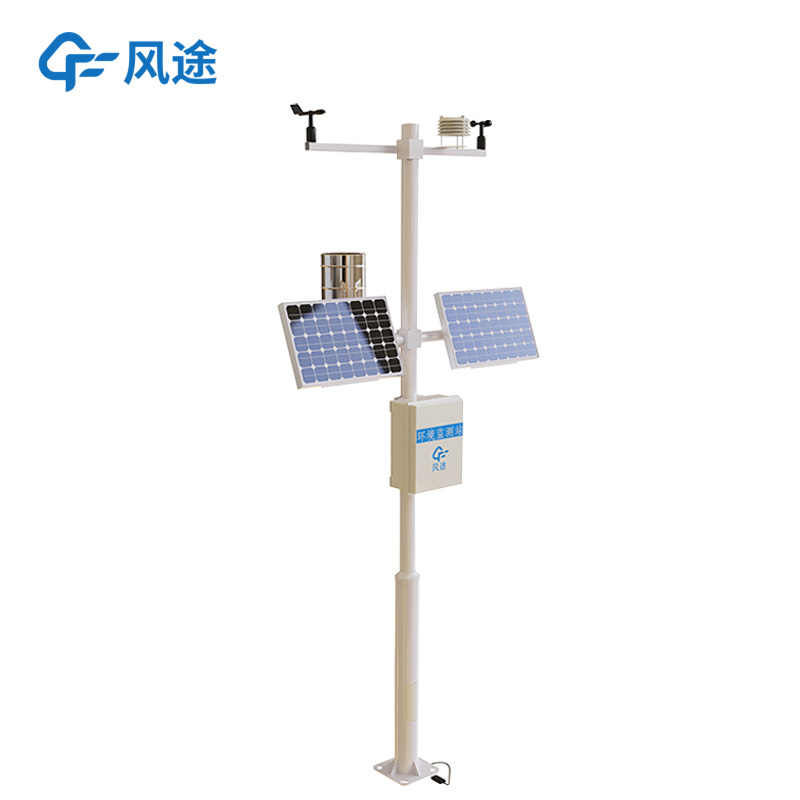Agricultural Weather Stations use professional equipment to accurately monitor meteorological elements such as sunlight, temperature, precipitation, humidity, and wind speed continuously over the long term. The detailed meteorological data they provide reflect the basic climatic characteristics and change patterns of the local area. For example, through years of monitoring and analysis by Agricultural Weather Stations in a certain region, it shows that the region has a climate with high temperatures and abundant rainfall in summer, and mild temperatures and less rainfall in winter. Such climatic conditions are suitable for the growth of warm - and moisture - loving crops, so the region mainly grows crops like rice.
Agricultural Weather Stations also have the ability to monitor and issue early warnings for disastrous weather. They can detect signs of meteorological disasters such as droughts, floods, low - temperature freezing damage, and hailstorms in advance. After receiving a drought warning, farmers can adjust the planting structure in a timely manner, reducing the planting area of crops with high water requirements and switching to drought - tolerant crops like millet and sweet potatoes. By making advance plans and adjustments, the losses of agricultural production caused by meteorological disasters can be reduced, ensuring the stability and sustainability of agricultural production.
Agricultural Weather Stations can identify unique micro - climate resources in the region. In some mountainous areas, there are local areas with a large temperature difference between day and night. Based on the accurately monitored data, Agricultural Weather Stations support the local development of characteristic fruit - growing industries, such as apples and grapes, by taking advantage of this climatic feature. This helps to optimize the agricultural production structure, improve the market competitiveness and added value of agricultural products.
On the other hand, the agricultural production structure has an impact on the layout and functional requirements of Agricultural Weather Stations. Different types of agricultural production have different sensitivities to and requirements for meteorological conditions. In areas mainly engaged in protected agriculture, where a large number of out - of - season vegetables and flowers are grown, in addition to monitoring conventional meteorological elements, Agricultural Weather Stations need to focus on strengthening the monitoring of micro - meteorological environments such as temperature, humidity, and light intensity inside the facilities. In areas dominated by animal husbandry, the weather stations need to pay special attention to meteorological factors such as temperature, precipitation, and wind force, which have an important impact on the growth, reproduction, and occurrence of diseases and epidemics of livestock.
The scale and regional distribution of agricultural production also affect the layout of Agricultural Weather Stations. In areas with a large - scale and concentrated agricultural production, in order to ensure the representativeness and accuracy of meteorological data, the density of weather station layout needs to be increased. In areas with a small - scale and scattered agricultural production, factors such as cost - effectiveness need to be comprehensively considered in the station layout to achieve effective monitoring of the regional agricultural meteorological conditions. For example, in large - scale grain - growing bases, a weather station is set up at certain intervals to promptly obtain meteorological information of different plots, supporting precision agricultural production.
Agricultural Weather Stations and the agricultural production structure are interdependent and mutually reinforcing. Agricultural Weather Stations provide a scientific basis for the adjustment and optimization of the agricultural production structure, while the characteristics and requirements of the agricultural production structure promote the improvement of the layout and optimization of the functions of Agricultural Weather Stations, jointly contributing to the prosperity and development of agriculture.

Article address:https://www.sqqx.net/en/news/535.html

 +86 15898932201
+86 15898932201



